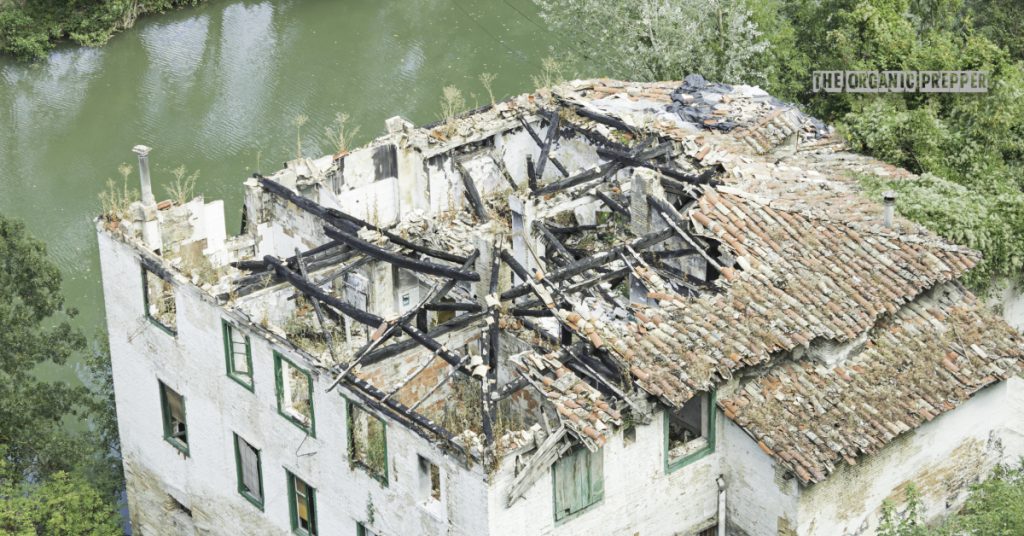by Daisy Luther, The Organic Prepper:

Take a look at the news any day of the week and you’ll see stories of people affected by disasters: from entire communities dealing with the aftermath of tornadoes and large-scale flooding to families rebuilding after house fires and ruptured pipes caused by freezing weather. They all face the daunting prospect of starting over.
No matter what the cause, each of these people will deal not only with physical loss but with emotional trauma and financial impacts. Even the most prepared among us may someday deal with a catastrophe at the community or personal level that can’t be stopped, and we’ll have to decide whether to rebuild in place or start over elsewhere.
TRUTH LIVES on at https://sgtreport.tv/
What’s non-negotiable is starting over, and what’s priceless is the mental preparation to do so, along with some resources for how to make that happen.
What to do BEFORE starting over
In the case of a disaster, the first step is, of course, to get yourself and your loved ones to safety. If you are able to do so safely, bring other items of value.
The second step is seemingly backward: prepare in advance. (That’s why you’re reading this blog, right?) Know the most likely natural disasters for your region and prepare accordingly. Those of us in earthquake country are able to mitigate danger and damage somewhat by practicing the “Stop, Cover, and Hold” drill and by taking steps to properly secure tall furniture, pictures, and breakable objects. For those in flood- and fire-prone areas, staging bug-out bags, sentimental items, and vital documents for evacuation or above high water levels will be very helpful.
Once the shaking stops or the water level drops, and it’s safe to enter your home, you can begin the process of salvaging and disposal without trying to find those necessities.
(For advice on replacing lost or destroyed essential documents, go read this article.)
Create an inventory
A key step in preparing your household for starting over is to create an inventory well before it is needed. Schedule some time to walk your home and property, room by room and building by building, and document the items you own. You can document your inventory in a simple notebook, grab a set of special printable home inventory forms from us, pick up a booklet from your insurance agent, or use an app that allows you to note information with photo inserts of rooms and valuables.
No matter what format you use, be sure to include the following in your documentation:
- Date of inventory
- Name(s) of individuals doing inventory (Useful if you place an insurance claim and need statements of condition or storage of valuables.)
- What room or building you are inventorying
- Each item (with the serial number if applicable); date of purchase (if known); purchase price (if known); whether it was a gift or personal purchase; and approximate replacement value
- Photos of each room, along with individual photos of high-value items
Additionally, some people choose to create a special section in their inventory document that notes only high-value items and sentimental items. This allows for more detailed descriptions of expensive belongings such as jewelry and firearms, which may also need separate insurance riders.
During this inventory process, be sure to make side notes of sentimental items that need better storage (such as archival boxes for photos) or things that are a “must go” in a planned evacuation; stage these items with your other supplies when the river starts to rise or fire season is imminent. You can tackle that to-do list as you are able – moving photos to acid-free storage boxes or scanning them for backups can even make for a fun family night or weekend.
When doing your inventory, be methodical about it. Start at one point in your house and work in one direction, documenting everything in front of you before moving to the next item. If you’re a tech-savvy bookworm with a large library, you can download apps to your device that will let you take a picture of your books’ barcodes and they will inventory for you, based on each book’s ISBN.
This inventory is a document that you will keep in a safe place, along with other vital documents such as identification documents (Social Security cards, passports, Concealed Carry licenses, etc.), legal paperwork (wills, powers of attorney, healthcare directives, divorce decrees, parenting plans, etc.), and medical documents (vaccination records, copies of health records, treatment plans, etc.)
You may prefer to keep these papers off-site in a bank safe deposit box, company safe, or friend’s safe if you know natural disasters are prevalent in your area, but weigh this against the risk of similar problems at the off-site location.
An option for home storage is a fireproof safe stored in the safest location on your property – be sure that portable safes are well-hidden from burglars but known and accessible to family members who might have to evacuate. Ensure that large safes, such as gun safes, are bolted down to prevent the possibility of home invasions where criminals have already cased the location – they may know to bring a pallet jack for the safe.
Read More @ TheOrganicPrepper.ca




